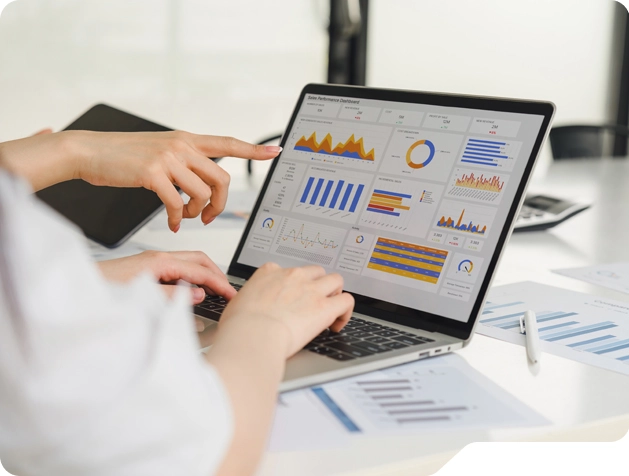City pages often get a bad reputation. Too many brands treat them as copy-and-paste versions of a homepage with a new city name swapped in.
However, city pages can be your most powerful lead-generation tool when done strategically.
At AVINTIV, we’ve helped brands transform these underused pages into scalable assets that dominate local markets.
These pages aren’t about ranking for vanity keywords. They’re about owning your local audience and converting that visibility into measurable business growth.
Optimizing your city pages for local SEO is one of the most effective ways to expand reach and build trust in every market you serve.
The Real Role of City Pages in a Scalable Local SEO Strategy
Local landing pages are foundational components of a brand’s regional growth strategy.
Each page gives your business the ability to show up in city-specific search results while speaking directly to that audience’s needs and language.
A strong city page connects relevance, authority, and conversion. It reinforces your local credibility, provides value to users in that area, and captures leads ready to take action.
Key characteristics of an effective city page include:
- Matching content to the intent and culture of each location
- Featuring reviews, testimonials, or social proof from that city
- Maintaining your consistent brand voice and design across markets
- Tracking conversions individually to identify high-performing areas
Location relevance and consistent name, address, and phone (NAP) information remain critical ranking signals in 2025. When you combine that structure with a precise conversion flow, you turn visibility into tangible leads.
What High-Performing City Pages Have in Common
Whether you’re managing three locations or thirty, the best city pages share one thing in common — they feel local without losing brand polish.
Here’s what they all get right:
- Localized authenticity: Each page reflects that community’s tone and character.
- Conversion-focused design: CTAs, forms, and proof elements guide users toward action.
- Technical depth: On-page SEO, schema, and internal linking strengthen authority.
- Brand consistency: Every city page looks and sounds like part of one cohesive brand.
Example: A regional fitness brand featuring local member stories or photos from their actual studio often sees stronger engagement than a templated page with generic stock images.
Using authentic elements will build trust with your audience. In turn, that trust drives clicks, calls, and conversions.
Three Real-World Frameworks That Drive Leads
Below are three proven frameworks that demonstrate how successful brands create city pages designed to drive conversions.
1. The Service-Area Leader
Ideal for service-based or franchise businesses looking to expand regionally. These pages clearly communicate local presence while reinforcing credibility.
Key elements:
- Intro paragraph that reinforces expertise and coverage area
- Local service map or city radius section
- Prominent testimonials from nearby clients
- Contact form or booking CTA above the fold
2. The Community Connector
This city page type is perfect for businesses that thrive on trust and local culture — think gyms, clinics, or boutique hospitality brands.
Key elements:
- Staff or leadership highlights with a local tie
- Mentions of landmarks, community partnerships, or events
- Neighborhood-specific photos or customer quotes
- Reviews pulled from local directories like Google or Yelp
Authentic local storytelling can dramatically improve engagement and conversions by making visitors feel represented and understood.
3. The Scalable Template for Growth
This city page design is the perfect fit for enterprises and franchises managing dozens of city pages. These pages focus on structure and scalability without sacrificing personalization.
Key elements:
- Modular design blocks (hero, services, testimonials, CTA) that are reused efficiently
- City-specific intro paragraphs and metadata
- Structured data and internal linking for search clarity
- Customizable calls-to-action for each market
This modular approach allows brands to maintain unique, localized relevance while keeping production manageable.
How City Pages Fit Into the Full Local Lead Generation Ecosystem
City pages work like the connective tissue between your search visibility, paid campaigns, and CRM data. When optimized correctly, they create a consistent experience from discovery to conversion.
Here’s how they fit into the bigger picture:
- SEO visibility: City pages boost discoverability in Google’s map and organic results.
- Engagement: Localized copy and reviews build user trust.
- Conversion insights: Tracking conversions per city uncovers where leads are strongest.
Learning to optimize and measure local SEO performance data ensures every location contributes to long-term ROI.
Common Mistakes That Kill City Page Performance
Many businesses hurt their results by approaching local landing pages as an afterthought. Poor execution can do more than hurt visibility by breaking trust with both users and search engines.
Common pitfalls include:
- Thin or repetitive copy with only the city name swapped in
- Keyword stuffing in headers and meta descriptions
- Weak or misplaced calls-to-action
- Failing to track individual page conversions or phone calls
Low-quality city pages can dilute brand credibility across your entire network. Consistency and relevance matter more than quantity.
Partner With Us to Build City Pages That Scale Growth
At AVINTIV, we view city pages as more than landing pages — they’re strategic brand assets.
If your business is ready to dominate in every city where you operate, partner with us at AVINTIV.
Together, we can build a scalable, high-performance local SEO strategy that turns searchers into loyal customers.









